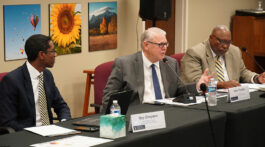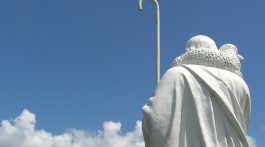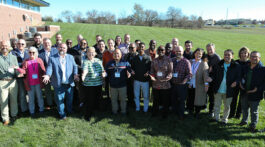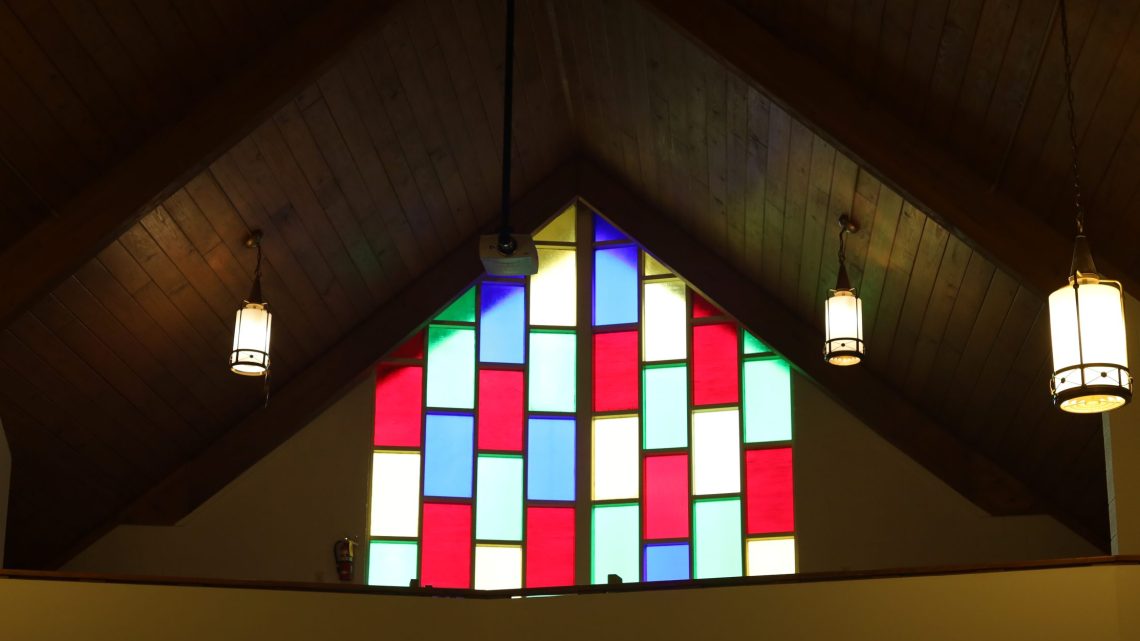As I wrote in How to Research Your Local Church’s History, the process of discovery is fascinating and absorbing for the investigator; however, research is meant to be shared, and therein lies its true value. Presenting or publishing the results of your work preserves a record of institutional memory, fosters a sense of familial belonging, and can help a congregation understand its role and place in the local community.
Once you have collected all of your source material, it is time to consider how the story will be presented to the public. The simplest presentation is a basic statement of facts in chronological order. Such a timeline is not true history, but rather a chronology, which readers may not find so interesting. The best historical writing considers the intended audience, situates events in the context of the local community and broader historical events, and provides analytical commentary—particularly where collective memory and the primary documents disagree or need more explanation.
Audience
In considering the intended audience, more than one creative work may be desirable. For the general public who may visit the congregation’s website, a more concise history emphasizing the church’s development, place, and contribution in the local community, is an inviting addition to information about your church. This account should focus on the more positive aspects of the congregation’s story. For an example, visit the Dowagiac Seventh-day Adventist church’s website.
A more complete narrative will better preserve institutional memory and be of interest to church members and Adventist historians. Depending on the amount of information available this may be published as a pamphlet or a book. In this more complete work, care can be taken to discuss more sensitive topics and recount stories of individuals who made significant contributions to the local church.
For example, the Dowagiac church has long benefited from its proximity to Andrews University, dating back to the days of Emmanuel Missionary College. Whether this was a boon or bane is the subject of debate. Thus, when I wrote the piece for the church’s website, I could honestly write about the positive, albeit informal, relationship between the congregation and the university. On the other hand, at times it seems that the Dowagiac congregation has relied too heavily on this assistance and struggled to be self-sufficient with a strong base membership drawn from the local community. This was not a discussion to hold on the church’s website.
Context
To situate history is to place the events in the life of a person or church in the context of broader social, political, and community events. Written history includes this broader context as both background and analysis of the core subject of the narrative. It can help explain why decisions were made, and why things happened or did not happen. The writer should seek to answer questions such as: What was going on in the town, state, or country when the congregation was organized? How did major events impact the congregation? What were the short- and long-term effects or unintended consequences?
In Dowagiac, the congregation organized in 1920 struggled to survive the Great Depression as the church remained very small. World War II almost closed the church. In fact, around 1942-1945, the congregation was reduced to a branch Sabbath School. After the war, the church was reorganized as a new congregation in 1945. It is from this date that the present church clerk’s records stem. Thus, before I started to research the congregation’s history, it was believed that there had been no Adventist church in Dowagiac before the 1940s.
The Dowagiac congregation reached its peak membership in the 1970s, when its membership included a number of professionals as well as a popular professor from Andrews University. As these people moved away, died, or retired over the course of the 1980s and 1990s, and industry waned in Dowagiac, their places were left unfilled. Reduced employment opportunities have created an economic decline in the city of Dowagiac, caused some residents to seek jobs in other cities while others subsist on welfare, and made it unlikely new professionals will be enticed to move there. It is certainly a town and church in need of missionary-minded Christians.
Analysis
Historical analysis is the lens through which we attach meaning to events, places, and people. There are many theoretical lenses used by historians, but everyone’s interpretation of history is colored by their personal experience. Collective memory refers to how a group remembers the past and is closely linked to interpretation of those events as well. It is influenced by life experience.
In the instance of Dowagiac, the city has long had a reputation for being a difficult place to evangelize. Countless hours have been spent in a variety of outreach efforts with seemingly little impact. Sometimes people join the church, but do not seem to fully commit and soon fade away. The Adventist church is not the only denomination in town facing these difficulties either. Present members may attribute spiritual apathy in the community to the general secularization of society in the twenty-first century. However, there is more to this truth.
In the summer of 1874, evangelists C. A. Russell and M. B. Miller reported about their work in Dowagiac in the Adventist Review and Sabbath Herald:
We pitched our tent and commenced meetings in this place, Tuesday evening, June 30. The outlook was not at all encouraging. As harvesting was just commencing, we thought it doubtful about getting a hearing in a small country town during the hurrying season. This is a place of about twenty-five hundred inhabitants; has been called the worst town on the Mich. Central R. R. Drunkenness has prevailed here to an alarming extent. There are four churches represented here: the Methodist, Baptist, Congregationalist, and Universalist; the latter being much the largest, most wealthy, and influential. Spiritualism has also a large number of adherents. (August 4, 1874, pg. 62)
When God instructs us to train our children in the ways of righteousness every day (Deuteronomy 6:7) and promises that the consequences of wickedness will be suffered by future generations (Exodus 20:5), is it any surprise that the descendants of the people described above seem no more interested in the Bible than their ancestors 150 years ago?
Lest, the reader think I am pessimistic, the part of this story which should encourage the present Dowagiac congregation is that nearly 150 years later, there is still an Adventist presence in this town. Although this church has closed or nearly closed twice, it has been opened three times. God is not finished in Dowagiac.
Other Considerations
History should attempt to be objective; thus, writers of congregational histories should avoid moralizing, preaching, and idealizing. God may have worked in a congregation in profound ways, but there are no perfect people or perfect churches. God’s leading can be discussed as the experience of the members who are part of the event, while failures are an integral part of the congregation’s story. Both scenarios will have shaped the church.
Always use discretion and tact, but be particularly sensitive when including information about individuals who are still alive. Information made publicly available will affect them.
Finally, get permission to publish any photographs borrowed from other people. You will also need permission from living people to publish any photos in which they appear.
Publishing
There are many options for publishing your church’s history. The length of the document and the number of people interested in it, as well as budget, will guide your choice. A small number of copies may be printed in a local shop, or simply distributed as a PDF file. If you choose to self-publish in this limited way, consider engaging the services of a professional copy editor and graphic designer. If your church has a more dramatic story of interest to a broader audience, consider self-publishing with a publisher such as TEACH Services, who will assist with editing, design, and marketing (these publishers do require fees upfront for their services). If your story is exceptionally interesting and well-written, consider submitting a book proposal to Pacific Press.
Last of all, but still very important, submit a copy to the Center for Adventist Research and the Union College Heritage Room (if your church is in the Mid-America Union). The local history section of your city or county’s public library may also appreciate receiving a copy—that is also a terrific outreach opportunity.
As I stated at the beginning of this series, local congregational history is a missing component of Adventist denominational history. Local congregations are the heart of the Seventh-day Adventist Church and their histories are essential to the whole picture of Adventist history. Researching and writing your local church’s history will make a significant contribution and be of value to future church historians.










